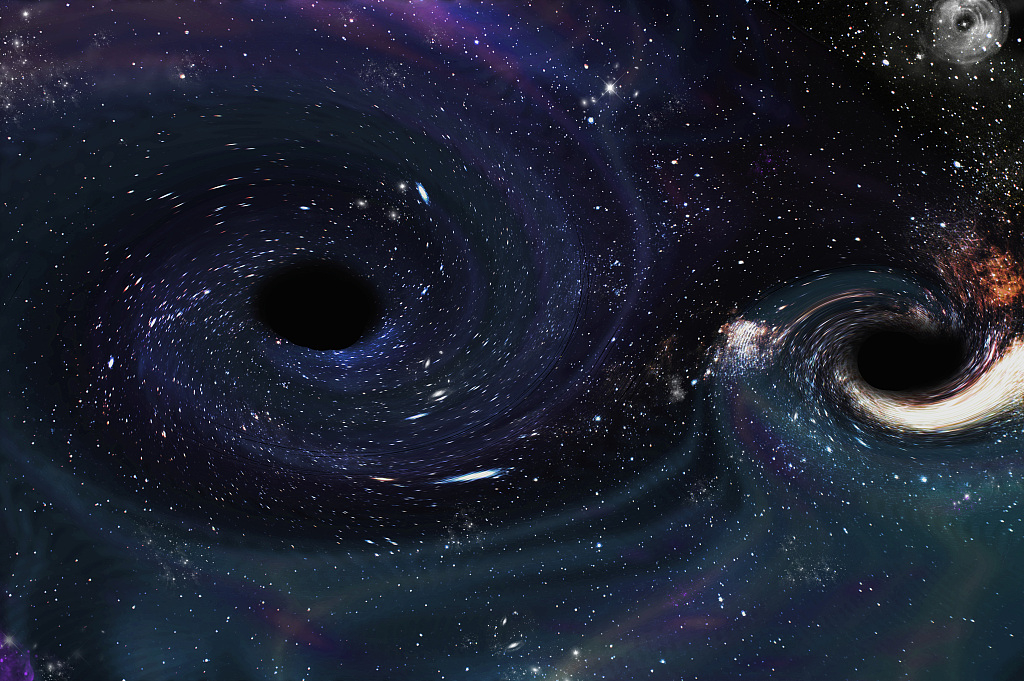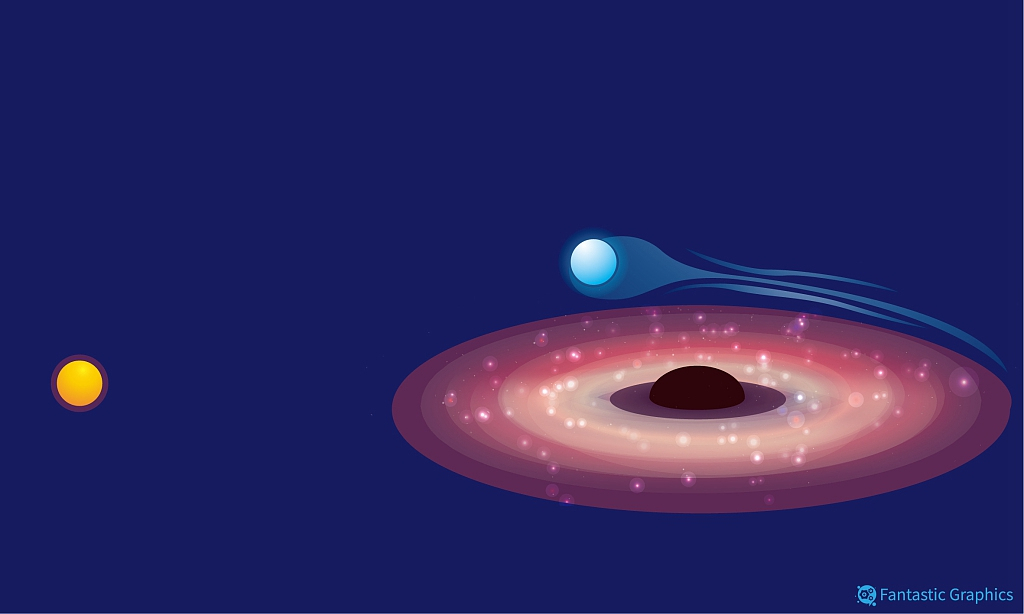An international team of scientists have detected a huge black hole with a mass 70 times larger than the Sun, which is believed to be the biggest individual stellar black hole that has been discovered in our galaxy till now.
The discovery was announced in the latest issue of Nature on Thursday morning.
The newly found black hole, located 15,000 light years from Earth has been named BL-1.
The Milky Way galaxy is estimated to contain 100 million stellar black holes - cosmic bodies formed by the collapse of massive stars and so dense even light can't escape. Until now, scientists had estimated the mass of an individual stellar black hole in our galaxy at no more than 20 times that of the Sun.
But the new discovery has toppled that assumption, challenging existing models of how stars evolve, and lead to a new classification of black holes.
"LB-1 is twice as massive as what we thought possible. Now theorists will have to take up the challenge of explaining its formation, "said Liu Jifeng, head of the research team.

There are three types of black holes depending on their mass: stellar black holes, supermassive black holes and miniature black holes, from biggest to smallest. /VCG Photo
There are three types of black holes depending on their mass: stellar black holes, supermassive black holes and miniature black holes, from biggest to smallest. /VCG Photo
Generally, there are three types of black holes depending on their mass: Stellar black holes, supermassive black holes and miniature black holes, from biggest to smallest.
Until a few years ago, stellar black holes could only be discovered when they gobbled up gas from a companion star. This process creates powerful X-ray emissions, detectable from Earth, which reveals the presence of the collapsed object.
The vast majority of stellar black holes in our galaxy are not engaged in a cosmic banquet though, and thus do not emit powerful X-rays. As a result, only about 20 galactic stellar black holes have been accurately identified and measured.
To counter this limitation, Liu and his team surveyed the sky with China's Large Sky Area Multi-Object Fiber Spectroscopic Telescope (LAMOST), looking for stars that orbit an invisible object, pulled by its gravity.
This observational technique was first proposed by the visionary English scientist John Michell in 1783, but has only become feasible with recent technological improvements in telescopes and detectors.
Still, such a search is like looking for a needle in a haystack: Only one star in a thousand might be circling a black hole.

A star eight times heavier than the Sun was seen orbiting a 70-solar-mass black hole every 79 days./VCG Photo
A star eight times heavier than the Sun was seen orbiting a 70-solar-mass black hole every 79 days./VCG Photo
After the initial discovery, the world's largest optical telescopes - Spain's 10.4-m Gran Telescopio Canarias and the 10-m Keck I telescope in the United States - were used to determine the system's physical parameters.
The results were fantastic: A star eight times heavier than the Sun was seen orbiting a 70-solar-mass black hole every 79 days.
(With input from Xinhua.)